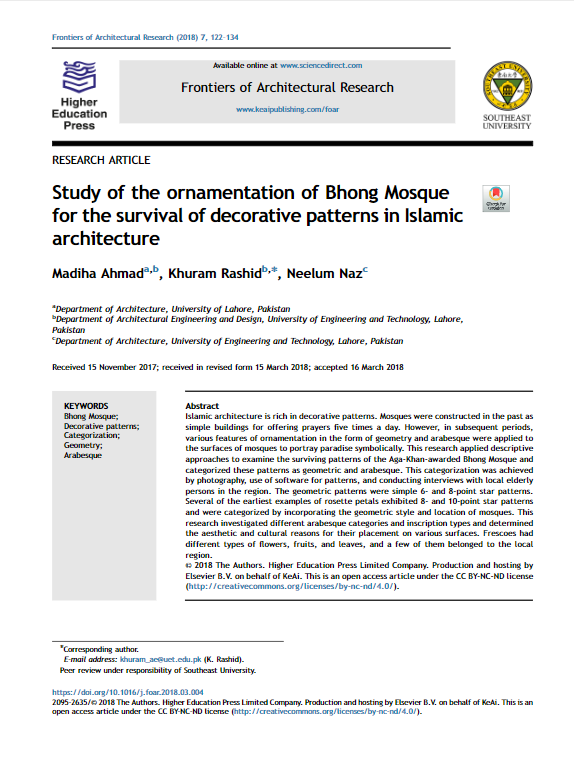
Islamic architecture is rich in decorative patterns. Mosques were
constructed in the past as simple buildings for offering prayers five times a
day. However, in subsequent periods, various features of ornamentation in the
form of geometry and arabesque were applied to the surfaces of mosques to
portray paradise symbolically.
This research applied descriptive approaches to examine the
surviving patterns of the Aga-Khan-awarded Bhong Mosque and categorized these
patterns as geometric and arabesque. This categorization was achieved by
photography, use of software for patterns, and conducting interviews with local
elderly persons in the region. The geometric patterns were simple 6- and
8-point star patterns. Several of the earliest examples of rosette petals
exhibited 8- and 10-point star patterns and were categorized by incorporating
the geometric style and location of mosques.
This research investigated different arabesque categories and
inscription types and determined the aesthetic and cultural reasons for their
placement on various surfaces. Frescoes had different types of flowers, fruits,
and leaves, and a few of them belonged to the local region.
This research investigated different arabesque categories and inscription types and determined the aesthetic and cultural reasons for their placement on various surfaces.
I agree to the terms outlined below:
You agree to upload and assign Mosqpedia Database the rights to use the content worldwide and in perpetuity across all current and future media platforms. Mosqpedia Database may edit, copy, adapt and translate your contribution.
The content will be distributed under the Creative Commons Attribution-Deed – Attribution-NonCommercial-NoDerivatives 4.0 International – Creative Commons
All data will be stored in line with data protection regulations.